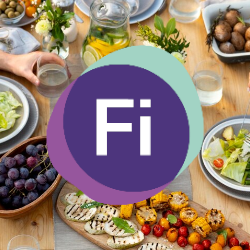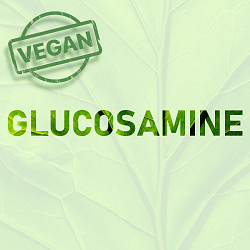12 Secrets for Successful Gluten-Free Baking

12 tips to get started
The challenge for a gluten-free baker is knowing how to compensate for a lack of gluten. Gluten develops when the proteins in wheat flour are transformed by water and mixing, resulting in sticky, elastic molecular bonds that create stretchy “doughy-ness” and help dough rise. Without gluten, baked goods can resemble lumpy, leaden baseballs.
So what’s a gluten-free baker to do? Here are 12 essential tips to help you bake great-tasting gluten-free muffins, breads, cookies, and more.
1. Use recipes specifically developed for gluten-free baking: This is a particularly good tip for beginners. Once you have a feel for gluten-free flours and the amounts of liquid and gum required, it will be easier to convert traditional recipes into their gluten-free counterparts.
2. Make sure your workspace and equipment are gluten-free: Avoid contamination from regular flour or ingredients containing gluten that could be airborne by wiping clean the workspace surface area, utensils, bowls, and baking dishes before starting. You might even consider having a separate set of tools and equipment just for gluten-free baking. Do not open containers holding wheat flour or other gluten-containing ingredients in your clean workspace.
3. Before purchasing wheat flour alternatives, make sure they’re labelled “gluten-free”: A flour that’s naturally gluten-free could become contaminated during processing or packaging. Labeling will confirm whether the product is 100% gluten-free.
4. Try premixed flours: This option is both easy and a time-saver. A prepared flour mix takes the guesswork out of creating your own combination. Look for options in the baking or natural foods section of your supermarket.
5. Combine a variety of flours: For the best baking results, blending flours produces a mix that most closely mimics all-purpose wheat flour. One recommended combination: 1/3 part sorghum flour, 1/3 part tapioca flour, and 1/3 part white rice flour. More gluten-free flours are available all the time, so experiment to discover the combinations you like best. Gluten-free whole wheat flours are stronger tasting and produce denser baked goods. If baking bread, use flours with a high protein content to add flavour and texture. Mix up a batch and then store it as you would any flour; delicate flours should be refrigerated or stored in the freezer.
6. Use flours made from ground nuts: Flavourful and nutritious, almond, filbert, peanut, and hazelnut flours, are all recommended for gluten-free baking, and can add a rich, nutty flair to flour blends. Their high protein content helps hold ingredients together. Nut flours are best stored in the freezer to give them a longer shelf life.
7. Add gums to replace gluten: Substituting xanthan gum or guar gum gives gluten-free dough the required “stickiness” or chewiness. A little goes a long way—use a scant 1/4 teaspoon xanthan gum per 1 cup flour.
8. Increase the butter and eggs: Butter adds moisture and helps the flour hold together, while eggs serve as natural leaveners, adding moisture, volume, and protein, which helps hold the mixture together. Experiment by replacing 1/2 cup water with egg whites or eggs.
9. Mix everything together in one bowl: Unlike the traditional baking method, stirring all ingredients together at the same time—dry with wet, butter, sugar and flour all in one bowl—is the key to producing a light, tender gluten-free crumb. Make sure all the ingredients are at room temperature and use an electric mixer to create plenty of air pockets where leaveners such as baking powder can activate and help the dough rise. (Make sure the baking powder you’re using hasn’t been cut with wheat starch.)
10. Substitute carbonated fizzy drink or gluten-free beer in place of water: Liquids that contain carbon dioxide bubbles promote volume in bread loaves. Gluten-free beer can also add flavour to bread recipes.
11. Add fruit pectin to gluten-free bread recipes: Traditionally used in making fruit jams and jellies, adding 1 teaspoon pectin to a gluten-free bread batter will help keep the finished bread moist.
12. Invest in a digital thermometer: Just like checking the internal temperature of meats and poultry for doneness, using a digital thermometer means you’ll never have to guess whether the centre of a loaf of bread is properly baked. If the thermometer registers about 206°F, the bread is done.
Best gluten-free flours & other baking ingredients
Base flours
- Almond flour: Sweet, nutty, rich, high-protein, coarse meal; rounds out harsher flours
- Amaranth flour: High in protein with a starchy, distinctive taste; best used in combination with other grains
- Buckwheat flour: Strong and nutty tasting, this high-protein flour helps build structure
- Brown rice flour: More nutritional value than white flour but with a gritty texture and strong nutty flavour that doesn’t work for all recipes
- Chickpea flour: Sweet and beany tasting, high in protein, with ability to absorb liquid and become firm
- Coconut flour: Rich, high-fibre flour with a gently sweet coconut flavour; use on its own in sweet recipes or use to sweeten and tenderize savoury mixes
- Corn flour: A smooth, dense flour with a mellow corn flavour
- Garfava flour: A combination of garbanzo (chickpea) and fava flours with a slightly less pronounced "beany" taste than chickpea flour
- Millet flour: Tender texture, sweet, and easily digestible
- Potato flour: Heavier white flour most often used to give breads a smooth, mild flavour
- Quinoa flour: High in protein, nutty flavoured yet mild
- Sorghum flour: Mild, sweet-tasting flour lacking an assertive flavour
- Soya flour: Nutty, sweet heavier flour with a high-protein content; ideal for both sweet and savoury baking
- Tapioca flour: Smooth and white, adds chewiness
- Teff flour: Rich, nutty tasting, and nutritious
- White rice flour: Found in many prepared gluten-free products, it can be helpful as a blank canvas for more interesting and nutritious ingredients
Thickeners
- Arrowroot powder: A starchy thickener similar to cornstarch
- Cornstarch: A tried-and-true thickening starch.
- Cornmeal: A gritty, sweet addition to breads and muffins.
Additives for texture & taste
- Linseed Meal: Rich in fibre and antioxidants, often used to replace eggs and contribute to structure
- Gelatin: Used to give doughs strength and elasticity with some added protein
- Gluten-free oats: Add a sweet, mild taste to recipes. (Be sure to purchase gluten-free oats, since oat and wheat fields are often in close proximity and many oats can become contaminated.)
- Xanthum gum and guar gum: A gluten substitute, the gums provide a chewy mouth feel (xanthum gum is often preferred, since guar gum can have a laxative effect.)
In closing, remember, the following grains are not gluten-free: barley, rye, and wheat relatives such as spelt, triticale, and KAMUT wheat.
Copyright © 2024 TraceGains, Inc. All rights reserved.



 Lehmann&Voss&Co. and the LEHVOSS Group will be presenting their range of high-quality minerals at Food...
Lehmann&Voss&Co. and the LEHVOSS Group will be presenting their range of high-quality minerals at Food...  We are pleased to announce our new partnership with Zooca® The Calanus® Company for
We are pleased to announce our new partnership with Zooca® The Calanus® Company for 
 Calcium is well-known for its health benefits, especially for athletes and active individuals....
Calcium is well-known for its health benefits, especially for athletes and active individuals....  New
New 






































